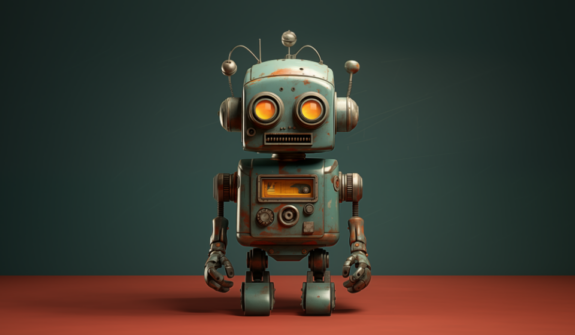How to Detect AI Content

The technological landscape is advancing rapidly. Thus, the ability to discern between content created by artificial intelligence (AI) and that written by humans has become increasingly vital. AI’s growing sophistication in mimicking human writing styles makes distinguishing between the two challenging yet essential. This article delves into various strategies and tools that aid in detecting AI-generated content, ensuring the authenticity of the written word in the digital age.
Detecting AI Content: The Essentials
AI content detection is a nuanced process that hinges on distinguishing subtle differences in sentence structure, thematic consistency, and vocabulary usage. This detection process isn’t just about identifying AI-authored text; it’s also about understanding the evolving capabilities of AI technology and its implications on content creation.
AI Text Detect: Delving into Detection Mechanisms
- Pattern Recognition in AI Writing: AI text detection is a sophisticated process that involves identifying unique patterns and anomalies typical to AI writing. This might include overly formal language, lack of nuanced expression, repetitive sentence structures, or unusual syntax.
- Advanced AI Detection Tools: Many AI content detectors are available, employing complex algorithms to scrutinize text and pinpoint signs indicative of AI generation.
- Human vs. AI Writing Analysis: One effective method involves comparing suspicious content with known human-written samples. This comparison can reveal if AI has had a role in creating content.
AI-Generated Check: Assessing Content Authenticity
There are a few ways that one can assess the authenticity of content. First and foremost, you can detect AI-generated text using AI writing checkers and additional tools specifically designed to recognize AI-generated text. These tools examine coherence, consistency, syntactical patterns, and logical flow. These tools also compare text against extensive databases of AI-generated samples. Additionally, one can mitigate false positives by reading content thoroughly so that it is not mistakenly flagged as AI-generated due to similar writing styles and structures.
AI-Generated Content Detection: Advanced Techniques
AI-generated content detection is a sophisticated process that involves a deeper look into the nuances of content analysis. This step goes beyond mere pattern recognition, focusing on the intricacies of language use, thematic development, and the unique elements of style that typically characterize human writing. Advanced techniques in this domain involve:
- In-depth Content Analysis: AI-generated content detection goes beyond basic checks, delving into finer aspects of phrasing, contextual relevance, and the subtleties of human expression that AI often overlooks.
- Plagiarism and AI Content Checkers: Modern plagiarism checkers now include functionality for detecting AI-generated content. This dual-purpose tool is invaluable for content verification in academic and professional settings.
- Identifying Hallmarks of AI-Generated Text: This step involves scrutinizing the content for creativity, emotional depth, logical consistency, and narrative flow – areas where AI often falls short compared to human writers.
Check if It is Written by AI: Final Verification Steps
The final step in detecting AI content is a comprehensive verification process combining technology and human insight. This stage is crucial in determining whether the content is AI-generated or human-written. It involves the following::
- Specialized AI Checker Tools: These tools are designed to address whether the content was written by AI specifically. They analyze the text, often providing a probability score indicating the likelihood of AI authorship.
- Human Expertise in Content Analysis: In some cases, human intuition and expertise are crucial in detecting AI-written content. This is especially true in more nuanced or complex writing scenarios, where the human touch is still unparalleled.
Additional Considerations in AI Content Detection
- Understanding AI Writing Tendencies: Familiarity with the typical characteristics of AI-generated text, such as lack of personal anecdotes, overly standardized language, or missing contextual cues, can be a significant asset in detection.
- Training and Awareness: Continuous education and training in AI technology and its evolution in content creation are essential. This includes staying updated on the latest AI engines and their writing capabilities.
- Ethical Considerations: Detecting AI-generated content also raises ethical considerations, particularly ensuring that such tools are used responsibly and do not undermine legitimate AI use in content creation.
In summary, detecting AI content is a multifaceted process combining advanced technological tools with human analytical skills. Methods of differentiating between AI-generated and human-created content will continue to advance as AI evolves into the technological landscape. AI-generated and human-created content must also advance. Maintaining this balance is crucial for preserving the authenticity and integrity of written content in an age increasingly influenced by artificial intelligence, ensuring that the human element in writing remains distinguishable and valued. If you’re looking to understand how AI-generated content and human-created content can work in tandem for your business, contact our Lounge Lizard Brandtenders for more information.






